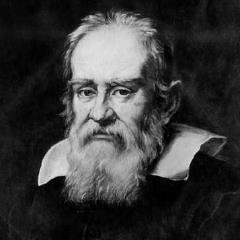Science and InventionGalileo |
What were Galileo’s contributions toscience and mathematics? |
Galileo Galilei (1564–1642) is credited with establishing the modern method of experimentation. He was the first scientist and thinker to try to prove or disprove theory by conducting tests and observing the results. Prior to Galileo, scientific theory was purely based on hypothesis and conjecture. It was in the interest of conducting accurate tests and in making precise observations that Galileo developed a number of inventions, including the hydrostatic balance (a device designed to measure the density of objects) in about 1586, and the thermometer (one of the first measuring devices used in science) in 1593.
The invention most widely credited to Galileo is the telescope; however, he did not originate the instrument, but rather improved it (in 1609). He was also the first to use a telescope to study the skies, which led him to make a series of discoveries, all in 1610: the Moon shines with reflected light; the surface of the moon is mountainous; the Milky Way is made up of countless stars; and Jupiter has four large satellites. He was even able to correctly estimate the period of rotation of each of these moons, which he named “Medicean stars” (for his benefactor, Cosimo de Medici). Galileo was also the first to observe the phases of Venus, which are similar to the moon’s, and to discover sunspots.
Prior to these astronomical discoveries, Galileo had already made significant contributions to science. In 1589, when he was only 25 years old, he published a treatise on the center of gravity in solids. From 1602 to 1609 he studied the motion of pendulums and other objects along arcs and inclines. From these observations, he concluded that falling objects accelerate at a constant rate. This law of uniform acceleration later helped Sir Isaac Newton (1642–1727) derive the law of gravity. Galileo also demonstrated that the path of a projectile is a parabola.
Galileo was a professor of mathematics at Pisa (1589–1591) and at Padua (1592–1610), Italy. In 1610 he was appointed philosopher and mathematician extraordinary to the grand duke of Tuscany, Cosimo de Medici.

